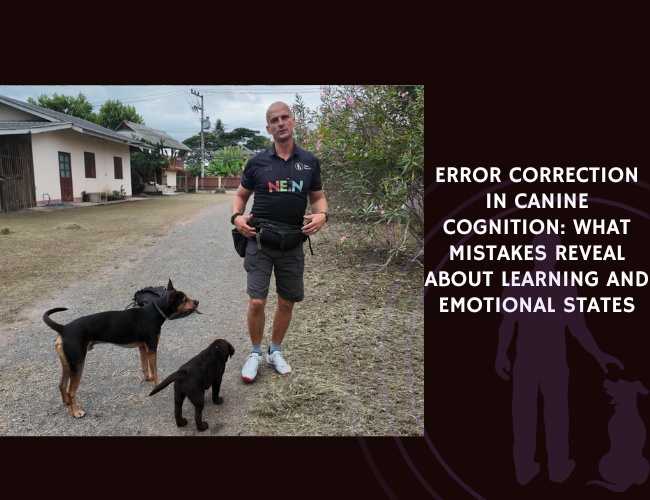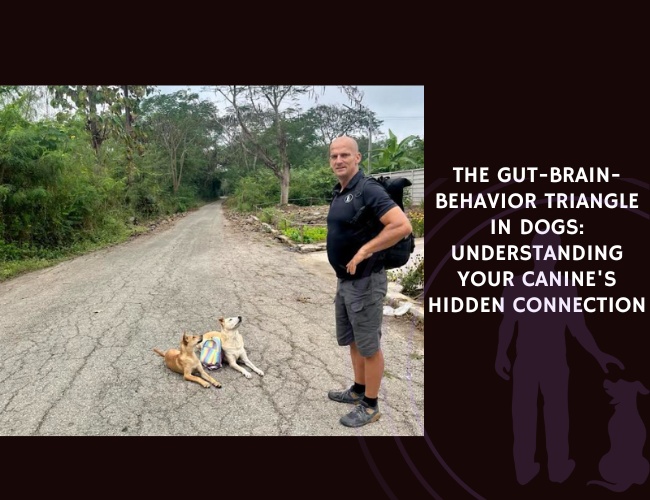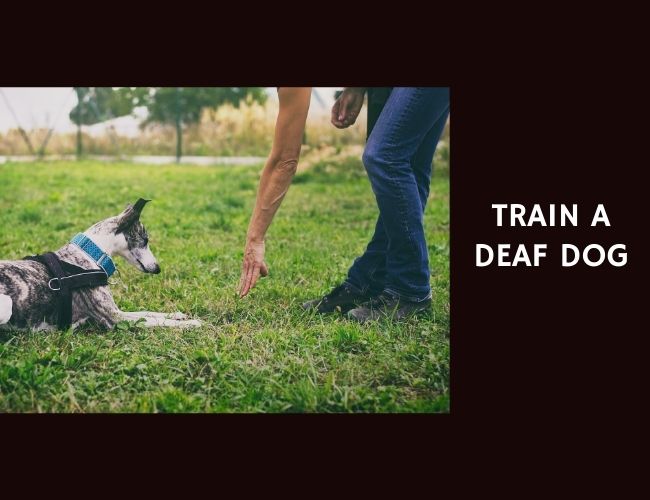Introduction: Understanding Your Dog’s Learning Journey Through Mistakes
Have you ever watched your furry friend struggle with a new trick, only to see that moment of clarity when they finally “get it”? That journey from confusion to comprehension reveals a fascinating world of canine cognition that we’re only beginning to understand. Every mistake your dog makes isn’t just a failed attempt – it’s a window into their remarkable ability to process information, adjust strategies, and navigate the complex emotional landscape of learning.
When we explore how dogs process and learn from errors, we’re not just improving our training techniques. We’re deepening our understanding of the profound cognitive and emotional capacities that make our canine companions such remarkable learners. From the family Golden Retriever mastering a new command to the working Border Collie perfecting complex herding sequences, error correction shapes every aspect of how dogs interact with their world – and with us.
Let us guide you through the intricate science of how your dog’s brain processes mistakes, transforms them into learning opportunities, and uses this information to build stronger bonds with you. Along the way, you’ll discover practical insights that will transform how you approach training, understand your dog’s emotional responses, and create an environment where mistakes become stepping stones to success. 🐾
The Science Behind Canine Error Processing
How Your Dog’s Brain Interprets Mistakes
Did you know that your dog’s brain is constantly making predictions about what will happen next? This remarkable process, known as predictive coding, means your furry friend is always comparing what they expect to happen with what actually occurs. When there’s a mismatch – perhaps they expected a treat but received praise instead – their brain generates what scientists call an “error signal.”
The Prediction Machine at Work: Your dog’s brain operates like a sophisticated prediction machine. Every time they perform a behavior, neural pathways fire in anticipation of specific outcomes. When the actual result differs from the expectation, specialized neurons in the prefrontal cortex – the brain’s executive control center – immediately flag this discrepancy. This isn’t just abstract neuroscience; you can actually observe this process in action when your dog pauses mid-behavior, tilts their head, or tries a different approach.
Reinforcement Learning in Real-Time: These error signals don’t just disappear; they become the foundation for learning. Through reinforcement learning models, your dog’s brain uses each mistake as valuable feedback, recalibrating future behaviors to increase the likelihood of success. Think of it as your dog’s internal GPS constantly recalculating the route to their desired destination – whether that’s earning a treat, your approval, or successfully completing a task.
The Neurological Orchestra of Error Detection
When your dog makes a mistake, an intricate neurological symphony begins. The prefrontal cortex, responsible for executive functions and decision-making, works in concert with the limbic system – the emotional center of the brain. This collaboration means that errors aren’t processed in isolation; they’re immediately colored by emotional context and past experiences.
Dopamine’s Crucial Role: Perhaps most fascinating is the role of dopamine in this process. Often misunderstood as simply the “reward chemical,” dopamine actually signals the difference between expected and actual outcomes. When your dog anticipates a reward but doesn’t receive it, dopamine levels briefly dip below baseline – creating what researchers call a “negative prediction error.” This temporary decrease motivates your dog to adjust their behavior, driving the learning process forward.
The Amygdala Connection: Meanwhile, the amygdala – your dog’s emotional alarm system – evaluates whether this error represents a threat or simply a learning opportunity. A calm, supportive environment keeps the amygdala’s response measured, allowing the prefrontal cortex to maintain control and process the error constructively. However, stress or fear can trigger amygdala hypersensitivity, overwhelming the learning circuits and potentially leading to shutdown or avoidance behaviors.
Emotional Landscapes: How Dogs Feel About Their Mistakes
The Spectrum of Emotional Responses
Your dog’s emotional response to mistakes isn’t one-size-fits-all. Just as humans react differently to errors based on personality, past experiences, and current mood, dogs display a remarkable range of emotional responses when things don’t go as planned.
Frustration Signals You Might Notice:
- Increased vocalizations (whining, barking, or grumbling)
- Displacement behaviors like scratching or sniffing the ground
- Stress yawns or excessive lip-licking
- Pacing or restless movement patterns
- Brief moments of “giving up” before re-engaging
These behaviors aren’t signs of defiance or stubbornness – they’re your dog communicating their emotional state as they process the challenge. Understanding these signals helps you provide appropriate support without overwhelming or under-challenging your companion.
Building Emotional Resilience: Some dogs bounce back from errors with remarkable speed, while others need more time to process and recover. This resilience isn’t fixed; it’s a skill that develops through experience. Dogs who encounter “safe failures” – mistakes in supportive environments where they’re encouraged to try again – develop stronger emotional resilience over time. Think of it as emotional muscle-building: each supported mistake strengthens their ability to handle future challenges.
When Mistakes Become Overwhelming
Not all error experiences are created equal. Repeated failures without support can lead to concerning patterns that affect your dog’s wellbeing and learning capacity. Understanding these patterns helps you recognize when your furry friend needs additional support.
Learned Helplessness: This troubling phenomenon occurs when dogs experience repeated failures they cannot control or escape. Eventually, they stop trying altogether, even when success becomes possible. You might notice your dog simply lying down during training, refusing to engage, or showing signs of depression. This isn’t laziness – it’s a protective psychological response to overwhelming failure.
Stress Cascades: When errors trigger excessive stress, cortisol floods your dog’s system. This stress hormone, while useful in small doses, becomes problematic when chronically elevated. High cortisol levels impair memory formation, reduce problem-solving abilities, and can even suppress immune function. Physical signs include excessive panting, drooling, trembling, or digestive upset during or after training sessions.
The good news? With proper support and understanding, even dogs who’ve developed these patterns can learn to re-engage with challenges positively. The key lies in creating experiences where mistakes feel safe and manageable. 🧡
Learning Efficiency: Turning Mistakes Into Mastery
The Art of Error Correction
How you respond to your dog’s mistakes profoundly impacts their learning trajectory. Research reveals that dogs learn most efficiently when errors are acknowledged but not punished – a delicate balance that respects both their cognitive processes and emotional needs.
Gentle Guidance vs. Ignoring Errors: When your dog makes a mistake, you have choices. Gentle correction – redirecting attention, providing clearer cues, or breaking down complex behaviors into smaller steps – helps dogs understand what went wrong without triggering stress responses. Simply ignoring errors, while better than punishment, can leave dogs confused and slow learning. The most effective approach? Acknowledge the error with neutral body language, then immediately guide your dog toward the correct behavior.
The Power of Contrast: Dogs learn exceptionally well through contrast. When they experience both incorrect and correct responses in close succession, their brains can better identify the crucial differences. This is why many successful trainers use a “no reward marker” – a neutral sound or word that simply means “that’s not it, try again” – followed immediately by guidance toward success.
Classical vs. Operant Contexts
Error processing differs significantly depending on the type of learning taking place. Understanding these differences helps you tailor your approach to match your dog’s cognitive state.
Classical Conditioning Errors: In classical conditioning scenarios – where your dog learns associations between stimuli – errors typically involve mismatched expectations. Perhaps your dog expects the doorbell to mean visitors but instead hears it during a TV show. These prediction errors help refine discriminations, teaching your dog to differentiate between similar but distinct situations.
Operant Conditioning Challenges: When your dog actively performs behaviors to earn outcomes (operant conditioning), errors become more complex. They might perform the wrong behavior, execute the right behavior incorrectly, or mistime their response. Each type of error requires different cognitive processing and benefits from specific correction strategies. A mistimed sit might need different feedback than sitting when you asked for “down.”
Trial-and-Error Mastery
Some of the most impressive canine learning happens through trial-and-error exploration, particularly in problem-solving contexts like puzzle feeders, scent work, or agility challenges.
The Problem-Solving Brain: When faced with puzzle boxes or complex tasks, your dog’s brain shifts into an exploratory mode. Errors here aren’t failures – they’re information gathering. Each unsuccessful attempt eliminates one possibility, narrowing the path to success. You can actually observe this process: watch how your dog’s attempts become more refined with each try, building on previous “mistakes” to construct a solution.
Scent Work Revelations: In scent detection tasks, errors reveal sophisticated cognitive processing. A dog might initially alert to similar but incorrect scents, gradually refining their discrimination through error feedback. This iterative process showcases their ability to form complex scent categories and adjust detection thresholds based on consequences.
The Social Dimension: How Relationships Shape Error Recovery
Reading the Room: Your Dog’s Social Awareness
Dogs don’t process errors in isolation – they’re acutely aware of our responses to their mistakes. This social dimension adds layers of complexity to error correction that uniquely positions dogs among domesticated animals.
The Check-In Phenomenon: Have you noticed your dog glancing at you after making a mistake? This “checking in” behavior represents sophisticated social cognition. Your dog is actively seeking information about how their error affects your relationship and what they should do next. These moments of connection are opportunities to strengthen trust and guide learning.
Appeasement and Recovery: After errors, many dogs display appeasement signals – lowered body posture, slow tail wags, or gentle face licks. These aren’t admissions of guilt but rather social strategies to maintain harmony and invite continued interaction. Recognizing and responding appropriately to these signals helps your dog recover more quickly from mistakes.
Handler Impact: The Power of Your Response
Your reaction to your dog’s mistakes can accelerate or derail their learning process. This isn’t about being perpetually positive – dogs benefit from honest, consistent feedback – but understanding how your emotional state influences their error processing.
Calm Confidence Effects: When you maintain calm confidence after your dog’s error, several beneficial processes occur:
- Cortisol levels remain manageable, preserving learning capacity
- The dog’s prefrontal cortex stays engaged, enabling problem-solving
- Social bonding hormones like oxytocin continue flowing, maintaining connection
- Recovery time decreases, allowing more learning opportunities
The Punishment Paradox: Punitive responses to errors create a troubling paradox. While they might suppress the unwanted behavior temporarily, they also:
- Increase overall stress, impairing future learning
- Create negative associations with training contexts
- Reduce willingness to attempt new behaviors (for fear of making mistakes)
- Damage the trust essential for effective communication
Population Differences: Not All Dogs Process Errors Equally
Different populations of dogs show distinct patterns in error processing and recovery, shaped by genetics, early experiences, and current life circumstances.
Working Dogs‘ Advantage: Dogs bred and trained for specific jobs often show remarkable error resilience. A Border Collie working sheep or a German Shepherd in police work typically recovers from mistakes quickly, viewing errors as information rather than failures. This isn’t just training – selective breeding for working traits includes selecting for dogs who can maintain focus despite setbacks.
Companion Dogs‘ Sensitivity: Family pets often show more varied responses to errors, influenced heavily by their individual relationship with their handler. They might be more sensitive to social cues after mistakes but also more willing to engage in trial-and-error learning when they feel secure in their relationship.
Shelter Dogs’ Special Needs: Dogs from shelters or with traumatic backgrounds might show heightened sensitivity to errors. Past experiences where mistakes led to abandonment, punishment, or unpredictable consequences can create lasting impacts on error processing. These dogs often benefit from extra patience, predictable responses to mistakes, and celebrating small successes to rebuild confidence. 🐾

Practical Applications: Building Better Learning Environments
Designing Low-Frustration Training Sessions
Creating training environments where mistakes feel safe and manageable transforms how your dog approaches learning challenges. This isn’t about eliminating errors – it’s about optimizing the conditions under which they occur.
The Goldilocks Principle: Tasks should be neither too easy nor too difficult – they need to be “just right.” Aim for approximately 80% success rate in training sessions. This ratio provides enough success to maintain motivation while ensuring sufficient errors to drive learning. When success drops below 60%, frustration builds; above 90%, learning slows due to lack of challenge.
Environmental Considerations:
- Minimize distractions initially, gradually increasing complexity as skills solidify
- Ensure physical comfort (appropriate temperature, surface, lighting)
- Time sessions when your dog is alert but not hyperaroused
- Create clear spatial boundaries that signal “learning zone”
- Use consistent cues and markers across different environments
Session Structure for Success: Break complex behaviors into micro-steps, allowing your dog to experience frequent small successes punctuated by manageable errors. This approach, called “errorless learning” when taken to its extreme, actually benefits from strategic error inclusion – just enough to keep your dog’s error-processing systems engaged without overwhelming them.
Recognizing and Addressing Maladaptive Patterns
Sometimes, repeated errors can lead to concerning behavioral patterns that require intervention. Early recognition allows for timely adjustment before these patterns become entrenched.
Shutdown Signals:
- Complete disengagement from training
- Lying down and refusing to move
- Averting gaze persistently
- Slow, reluctant movements when cued
- Seeking to leave the training area
When you observe shutdown, immediately reduce task difficulty, increase reward rate, and consider ending the session on a positive note. The goal is rebuilding confidence, not pushing through resistance.
Compulsive Repetition: Some dogs respond to error-induced stress by repeatedly performing behaviors they know, even when inappropriate. A dog might obsessively offer “sit” regardless of the cue given. This represents an anxiety response – the dog is trying to regain control through familiar actions. Address this by:
- Returning to simpler, varied tasks
- Rewarding calm attention before requesting behaviors
- Using different reward types to maintain engagement
- Incorporating play breaks to reset emotional state
Building Resilience Through Structured Failure
Paradoxically, one of the best ways to help your dog handle mistakes is to deliberately incorporate them into training – but in a carefully structured way that builds rather than breaks confidence.
The Safe Failure Framework:
- Predictable Challenges: Introduce problems with clear solutions your dog can discover through exploration
- Immediate Recovery Opportunities: Follow each error with an easier task to ensure quick success
- Celebration of Persistence: Reward effort and problem-solving attempts, not just correct outcomes
- Gradual Complexity Increase: Build on successful error recovery with slightly harder challenges
Puzzle Progression Example: Start with a simple puzzle feeder where errors (pawing the wrong spot) have no negative consequences. As your dog masters this, introduce puzzles where incorrect moves temporarily block access to treats, teaching patience and strategic thinking. Finally, advance to puzzles requiring specific sequences, where errors mean starting over – but with abundant encouragement and support throughout.
Advanced Training Strategies: Optimizing Error-Based Learning
The Power of Shaping Through Successive Approximations
Shaping represents one of the most sophisticated applications of error-based learning, where mistakes actively guide your dog toward increasingly accurate behaviors. Rather than viewing errors as problems, shaping reframes them as information that refines performance.
The Sculpting Process: Like a sculptor removing excess marble to reveal the statue within, shaping uses errors to eliminate incorrect responses and highlight correct ones. Each mistake tells your dog “not that way,” gradually narrowing their behavioral repertoire toward the target response. This process engages deep learning circuits, creating more robust and flexible behaviors than simple repetition ever could.
Micro-Adjustments Matter: Professional trainers recognize that not all errors are equal. A dog attempting to lie down but only achieving a play bow has made a more valuable error than one who simply stands still. These “near-misses” indicate your dog is actively problem-solving, experimenting with variations that approach the goal. Rewarding these approximations while withholding rewards for less accurate attempts creates a gradient that guides learning.
Errorless Learning vs. Error-Inclusive Training
The debate between errorless learning and error-inclusive training reveals important insights about how dogs process mistakes. Both approaches have merit, and understanding when to use each optimizes your training outcomes.
When Errorless Learning Shines:
- Teaching fearful or anxious dogs who might shut down with too many errors
- Introducing completely novel concepts where errors might create confusion
- Building foundation behaviors that will support more complex chains
- Working with dogs recovering from trauma or learned helplessness
The Benefits of Strategic Errors:
- Errors teach discrimination between similar behaviors
- Mistakes build problem-solving skills and cognitive flexibility
- Error recovery strengthens emotional resilience
- Contrast between incorrect and correct enhances memory formation
The key isn’t choosing one approach exclusively but rather matching your strategy to your dog’s current needs, the specific skill being taught, and the learning context.
Cross-Training and Generalization
How your dog processes errors in one context influences their learning in entirely different situations. This cognitive transfer represents one of the most remarkable aspects of canine intelligence.
Context-Shifting Challenges: A dog who learns to recover from errors in agility might show improved problem-solving in scent work. This isn’t just coincidence – error processing skills generalize across domains. The neural pathways strengthened through mistake recovery in one area enhance overall cognitive flexibility, benefiting diverse learning situations.
Building Meta-Learning Skills: Through varied error experiences, dogs develop “meta-learning” – essentially, learning how to learn. They become more efficient at recognizing patterns, adjusting strategies, and recovering from setbacks. You might notice your dog approaching new challenges with increased confidence, trying multiple solutions, and showing less frustration when initial attempts fail. 🧠
Health and Welfare Implications
The Stress-Learning Balance
While some stress enhances learning (called “eustress”), excessive stress from repeated errors can have serious health implications. Understanding this balance helps you protect your dog’s physical and mental wellbeing while optimizing learning.
Cortisol’s Double-Edged Sword: Short-term cortisol elevation during challenging training actually enhances memory formation. However, chronic elevation from persistent failure or harsh error correction leads to:
- Suppressed immune function
- Digestive issues
- Sleep disturbances
- Increased anxiety and reactivity
- Impaired cognitive function
Physical Health Markers: Watch for physical signs that error-related stress is affecting health:
- Changes in appetite or weight
- Excessive shedding or coat changes
- Increased susceptibility to infections
- Digestive upset during or after training
- Changes in sleep patterns or restlessness
Supporting Senior Dogs Through Cognitive Changes
As dogs age, their error processing abilities change. Senior dogs might need adjusted training approaches that account for cognitive aging while maintaining mental stimulation.
Age-Related Processing Changes:
- Slower error recovery times
- Increased sensitivity to failure
- Reduced cognitive flexibility
- Greater need for repetition
- Decreased stress resilience
Adaptations for Senior Success: Modify training to support aging brains:
- Increase reward frequency to maintain motivation
- Break behaviors into even smaller steps
- Allow longer processing time between attempts
- Use higher-value rewards to maintain engagement
- Focus on maintaining existing skills rather than teaching entirely new complex behaviors
These adaptations don’t mean lowering expectations – senior dogs can continue learning throughout their lives. Rather, it’s about optimizing conditions for their changing cognitive landscape.
The Welfare-Performance Balance
In working and competition dogs, balancing performance goals with welfare requires careful attention to how errors are managed. The pressure to achieve can sometimes overshadow the dog’s emotional wellbeing.
Sustainable Training Practices:
- Regular “fun” sessions without performance pressure
- Varied training to prevent burnout
- Monitoring for signs of chronic stress
- Planned rest and recovery periods
- Celebrating effort alongside achievement
Remember, a dog who maintains emotional wellbeing throughout their training career will ultimately perform better and enjoy a higher quality of life than one pushed beyond their emotional limits. 🧡
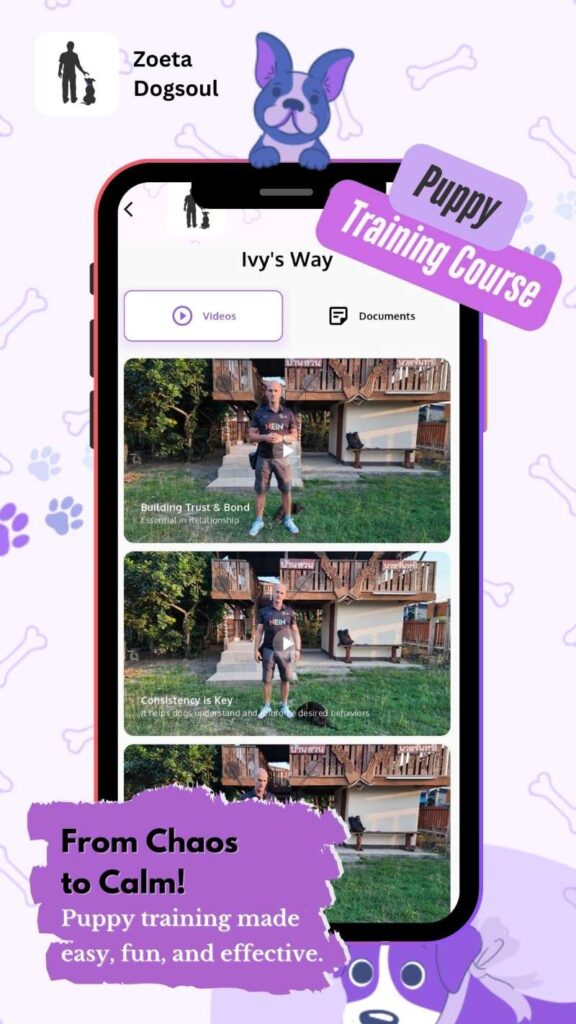
Breed-Specific Considerations in Error Processing
Herding Breeds: Precision and Pressure
Border Collies, Australian Shepherds, and other herding breeds often show intense responses to errors, driven by their genetic predisposition for precision and control.
The Perfectionist Tendency: These breeds might display frustration more readily when tasks don’t go as planned. Their high drive can become a liability if errors aren’t managed carefully. You might notice excessive repetition of incorrect behaviors or difficulty “letting go” of mistakes. Support them by:
- Incorporating regular “shake it off” breaks
- Using play to reset after challenging errors
- Teaching a specific “mistake recovery” cue
- Balancing precision work with free-form activities
Terriers: Tenacity Through Trials
Terriers bring remarkable persistence to error recovery, but this same tenacity can lead to problematic patterns if not properly channeled.
The Never-Give-Up Gene: While their determination is admirable, terriers might persist with incorrect solutions long after other breeds would try something new. This “dig deeper” mentality, literally bred for pursuing prey underground, means they need:
- Clear feedback about when to stop and try differently
- Rewards for flexibility, not just persistence
- Multiple solution paths to prevent fixation
- Regular redirection to maintain cognitive flexibility
Sensitive Breeds: Emotional Error Processing
Breeds like Cavalier King Charles Spaniels, Whippets, and some toy breeds show heightened emotional responses to errors, requiring especially thoughtful handling.
The Confidence Challenge: These dogs might take errors personally, showing prolonged upset after mistakes. Their sensitive nature means harsh corrections can cause lasting damage to learning ability. Support strategies include:
- Extremely high reward rates initially
- Gentle, encouraging verbal feedback
- Shorter sessions with guaranteed success endings
- Partner/helper dogs to model confident error recovery
Developmental Stages and Error Processing
Puppy Critical Periods (3-14 Weeks): Foundation for Life
Did you know that your puppy’s experiences with mistakes during their first 14 weeks of life create neural pathways that influence learning for their entire lifetime? This critical developmental window, when the brain shows maximum plasticity, determines how your dog will approach challenges, recover from setbacks, and build resilience throughout their years.
The Neuroplasticity Window: During these precious early weeks, your puppy’s brain is essentially under construction. Every experience – including how errors are handled – becomes part of their neural architecture. A puppy who experiences gentle, supportive error correction during this period develops robust pathways for resilience. Conversely, harsh corrections or overwhelming failures can create lasting hypersensitivity to mistakes that persists into adulthood.
Week-by-Week Error Development:
- 3-5 weeks: Puppies begin making their first “mistakes” during play with littermates. These early error experiences teach bite inhibition and social boundaries
- 6-8 weeks: Environmental exploration errors (bumping into objects, misjudging distances) build spatial awareness and physical confidence
- 9-11 weeks: Prime socialization period where positive error experiences with novel stimuli prevent future fear-based learning blocks
- 12-14 weeks: Complex social learning emerges; puppies who experience supportive error correction now show better training outcomes as adults
The magic of this period isn’t preventing all mistakes – it’s ensuring errors feel safe and recoverable. Puppies need what researchers call “optimal challenge” during this time: enough difficulty to engage error-processing systems without triggering overwhelm.
Adolescent Error Processing (6-18 Months): The “Teenage Brain” Phenomenon
If you’ve ever wondered why your previously well-trained adolescent dog suddenly seems to “forget” everything they knew, you’re witnessing a fascinating neurological reorganization that affects error processing in profound ways.
The Pruning Process: During adolescence, your dog’s brain undergoes synaptic pruning – essentially, a massive reorganization where unused neural connections are eliminated while frequently used pathways strengthen. This process temporarily disrupts established learning patterns, making your dog more prone to errors even with previously mastered behaviors. It’s not defiance; it’s neurobiology in action.
Hormonal Influences on Mistakes: Surging hormones don’t just affect your dog’s interest in marking and mating – they fundamentally alter error processing. Testosterone and estrogen influence:
- Risk assessment (adolescents often make errors by taking unnecessary risks)
- Impulse control (reduced prefrontal cortex regulation leads to more impulsive errors)
- Emotional intensity (mistakes feel more catastrophic to the teenage dog brain)
- Social sensitivity (peer presence affects error rates more strongly during adolescence)
Supporting your adolescent dog means adjusting expectations and increasing patience. Those “forgotten” behaviors aren’t lost – they’re temporarily less accessible while the brain rebuilds itself into its adult configuration.
Fear Periods and Error Sensitivity
Your dog experiences several fear periods throughout development, during which error sensitivity dramatically increases. Understanding these windows helps you provide appropriate support when mistakes feel especially overwhelming.
Primary Fear Periods:
- 8-11 weeks: First fear period coincides with leaving littermates. Errors during this time can create lasting negative associations
- 6-14 months: Second fear period varies by individual but typically occurs during adolescence. Dogs show heightened sensitivity to novel experiences and mistakes
- Some dogs experience additional fear periods around 18-24 months, particularly in slower-maturing breeds
During fear periods, your dog’s amygdala – the brain’s alarm system – shows heightened activity. This means errors that might normally be processed as neutral information instead trigger intense emotional responses. A simple training mistake might result in complete shutdown, trembling, or even defensive aggression. The key is recognizing these periods and temporarily adjusting your training approach to prioritize emotional safety over skill acquisition.
Comparison Chart: Error Processing Capacity Across Life Stages
8 Weeks – 4 Months: The Learning Sponge
- Error recovery time: 5-10 seconds
- Optimal challenge level: 90% success rate
- Session length: 2-3 minutes
- Best approach: Frequent, brief, highly rewarding sessions with minimal error emphasis
4-6 Months: Building Complexity
- Error recovery time: 10-20 seconds
- Optimal challenge level: 85% success rate
- Session length: 5-7 minutes
- Best approach: Introduce gentle error markers, increase variety of challenges
6-18 Months: Adolescent Volatility
- Error recovery time: Highly variable (5 seconds to several minutes)
- Optimal challenge level: Back to 90% success rate
- Session length: 5-10 minutes with breaks
- Best approach: Patience, consistency, reduced expectations during peaks of adolescent development
18 Months – 3 Years: Young Adult Optimization
- Error recovery time: 15-30 seconds
- Optimal challenge level: 70-80% success rate
- Session length: 10-15 minutes
- Best approach: Increase complexity, introduce challenging problem-solving tasks
3-7 Years: Peak Performance
- Error recovery time: 20-40 seconds
- Optimal challenge level: 70% success rate
- Session length: 15-20 minutes
- Best approach: Maximum challenge with strong emotional support
7-10 Years: Mature Stability
- Error recovery time: 30-60 seconds
- Optimal challenge level: 75-80% success rate
- Session length: 10-15 minutes
- Best approach: Maintain challenges while monitoring for fatigue
10+ Years: Senior Adjustments
- Error recovery time: 1-2 minutes
- Optimal challenge level: 85-90% success rate
- Session length: 5-10 minutes
- Best approach: Emphasize success, reduce complexity, increase reward frequency
Understanding these developmental patterns allows you to optimize training for your dog’s current neurological capacity, ensuring errors remain productive rather than overwhelming throughout their life journey. 🐾
Multi-Dog Household Dynamics
Social Learning from Errors: The Classroom Effect
Living with multiple dogs creates a unique learning laboratory where mistakes become social experiences. Your dogs aren’t just learning from their own errors – they’re constantly observing and processing the mistakes of their housemates, creating complex layers of social learning that can accelerate or complicate training.
The Observer Advantage: Research reveals that dogs watching another dog make and recover from errors show enhanced learning compared to solo training. When your younger dog watches your older dog work through a puzzle toy unsuccessfully before finding the solution, the observer encodes both the error and the correction without experiencing the frustration directly. This “vicarious learning” explains why second dogs often seem easier to train – they’ve been learning from their housemate’s mistakes all along.
Mirror Neurons at Work: Dogs possess mirror neurons – specialized cells that fire both when performing an action and when observing that action in others. When one dog watches another make an error, these neurons activate as if they themselves made the mistake. This creates a powerful learning experience without the emotional cost of personal failure. You might notice your observing dog’s subtle muscle movements mimicking the working dog’s actions, literally “practicing” without moving.
Competitive vs. Cooperative Error Contexts
The social dynamics between your dogs fundamentally shape how they process errors during group training sessions. Understanding whether your dogs operate in competitive or cooperative modes helps you structure training for optimal learning.
Competitive Error Dynamics: Some dog pairs naturally compete for resources, including your attention and rewards. In these dynamics:
- Errors by one dog might trigger increased arousal in others
- Dogs may rush through behaviors, increasing error rates in attempts to “beat” their housemate
- Resource guarding can emerge around training rewards
- One dog’s success might increase another’s frustration with their own errors
Managing competitive dynamics requires careful orchestration. Consider separate training sessions initially, gradually introducing parallel work where dogs perform different behaviors simultaneously. This reduces direct competition while maintaining social presence.
Cooperative Learning Environments: Other dog groups naturally support each other’s learning. In these blessed households:
- Dogs show patience while others work through challenges
- Successful dogs might offer appeasement signals to struggling partners
- Error recovery happens faster with peer support present
- Dogs develop complementary problem-solving strategies
Foster cooperation by rewarding calm observation, using group rewards for collective success, and creating scenarios where dogs must work together to solve problems.
Emotional Contagion: When Mistakes Spread
One of the most challenging aspects of multi-dog training involves emotional contagion – the rapid spread of emotional states between dogs. When one dog experiences frustration or stress from errors, this emotional state can cascade through your entire pack within seconds.
The Stress Cascade Effect: You’ve probably witnessed this: one dog struggles with a behavior, becomes frustrated, and suddenly all your dogs are agitated. This happens because dogs are extraordinarily attuned to emotional signals from their social partners. Stress hormones like cortisol actually become synchronized between bonded dogs, meaning one dog’s error-induced stress literally changes the brain chemistry of observers.
Breaking the Contagion Cycle:
- Recognize early warning signs (increased vigilance, tension, vocalization)
- Immediately redirect uninvolved dogs to calming activities
- Use physical barriers if needed to reduce visual stress signals
- Implement “reset” protocols that work for your entire group
- Consider individual training when one dog shows high error sensitivity
The flip side? Positive emotional contagion works too. When one dog recovers gracefully from an error and receives praise, observing dogs often show increased tail wagging, relaxed body postures, and improved engagement.
Building Individual Resilience in Group Settings
Creating individual learning paths within a multi-dog household requires thoughtful management but yields remarkable results. Each dog needs opportunities to develop personal error resilience while benefiting from social support.
Strategies for Individual Growth:
- Rotation Training: While one dog works, others practice calm observation from designated stations. This builds impulse control while allowing vicarious learning
- Difficulty Differentiation: Adjust challenge levels for each dog’s capacity. Your senior dog might practice basic sits while your adolescent tackles complex chains
- Personal Victory Moments: Ensure each dog experiences individual success, preventing stronger learners from overshadowing struggling partners
- Separate Breakthrough Sessions: When teaching particularly challenging new behaviors, work individually before attempting group practice
Remember, your goal isn’t eliminating all group training but rather ensuring each dog develops confidence in their personal ability to recover from mistakes. Dogs who build individual resilience become better social learners, creating a positive feedback loop that benefits your entire pack. 🧡
Mistakes. Signals. Growth.
Errors reveal intelligence. Each failed attempt is more than misstep—it’s a vital signal showing how dogs compare expectation with reality and adapt their strategies.
Brains learn through feedback. Error signals activate neural recalibration, guiding behaviour like an internal GPS. Every correction builds stronger pathways for future success.
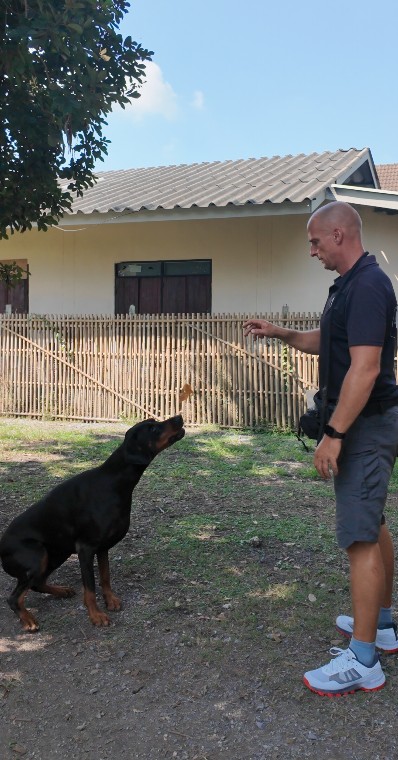
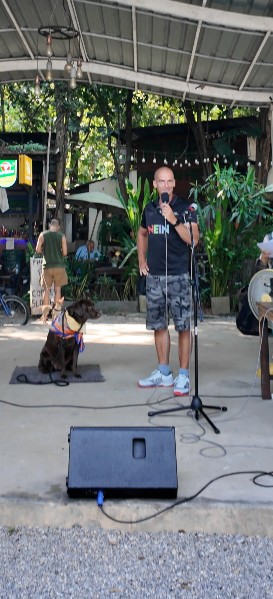
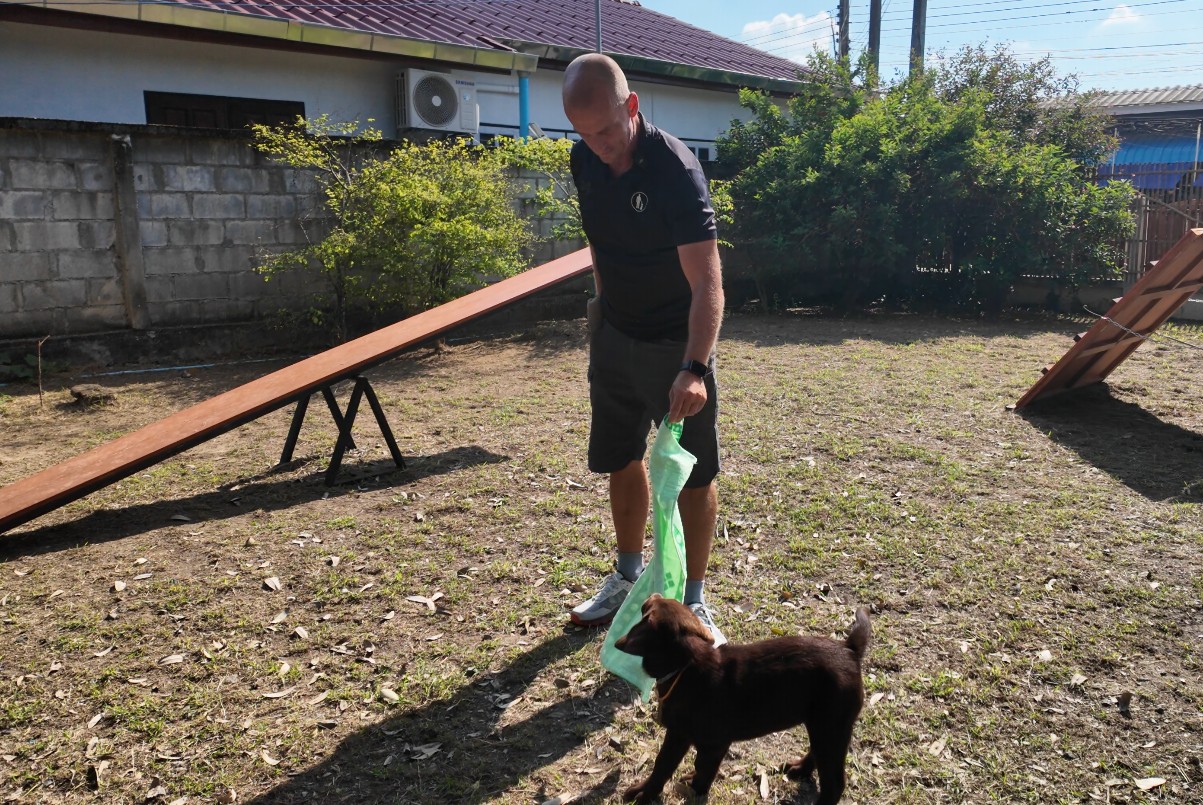
Emotion shapes outcomes. Dopamine dips and amygdala responses colour mistakes with feeling. Supportive environments turn errors into growth, while stress can block learning.
Specific Behavioral Problem Solutions
Separation Anxiety and Error Cascades
Dogs with separation anxiety experience a perfect storm of cognitive and emotional challenges that dramatically impact their ability to process errors effectively. Understanding this connection helps explain why anxious dogs often seem to make more mistakes and struggle with training.
The Anxiety-Error Spiral: When your dog experiences separation anxiety, their brain becomes flooded with stress hormones before you even leave. This pre-stressed state means:
- Working memory becomes impaired, making it harder to remember trained behaviors
- The amygdala becomes hyperactive, interpreting minor mistakes as major threats
- Executive function decreases, reducing problem-solving abilities
- Error recovery time extends dramatically, sometimes lasting hours
You might notice your anxious dog making “silly” mistakes they never make when calm – forgetting house training, destroying items they normally ignore, or failing to respond to well-known cues. These aren’t acts of spite; they’re symptoms of a brain overwhelmed by anxiety that cannot process information normally.
Breaking the Cascade: Addressing error cascades in anxious dogs requires treating the underlying anxiety first:
- Implement systematic desensitization to alone time
- Create predictable pre-departure routines that don’t trigger panic
- Use calming aids (puzzle toys, pheromones, calming music) during initial training
- Practice error recovery exercises when the dog is completely calm
- Consider anti-anxiety medication to create space for learning
Success comes from recognizing that until anxiety decreases, your dog’s error-processing capacity remains severely compromised.
Reactivity and Error Processing
Reactive dogs – whether fearful, aggressive, or overly excited – show distinct patterns in how they process and recover from mistakes. Their heightened arousal states fundamentally alter learning dynamics.
The Threshold Effect: Reactive dogs operate with a hair-trigger response system. When they’re even slightly aroused, their ability to:
- Discriminate between similar stimuli decreases
- Process correction signals diminishes
- Generate alternative behaviors becomes limited
- Recover from errors extends significantly
This means a reactive dog might perform perfectly in your living room but make constant errors the moment they see another dog, even at a distance. Their brain has shifted into survival mode, where learning takes a backseat to perceived safety.
Modified Error Approaches for Reactive Dogs:
- Work sub-threshold always – if your dog is reacting, they’re over threshold for learning
- Use distance as your primary tool for managing difficulty
- Implement “Look at That” protocols where observing triggers becomes the rewarded behavior
- Create multiple escape routes so errors don’t feel trapped
- Celebrate micro-successes rather than waiting for perfect responses
The key insight: reactive dogs need to feel safe before they can learn from mistakes. Every error in an aroused state reinforces reactivity patterns rather than building better behaviors.
Resource Guarding and Error Sensitivity
Dogs who guard resources show unique error-processing patterns that require specialized handling. Their mistakes often trigger defensive responses that can escalate to aggression if not properly managed.
The Possession-Error Connection: When a guarding dog makes an error during training involving food, toys, or space, their brain immediately shifts to protection mode. This creates several challenges:
- Errors feel like threats to resources rather than learning opportunities
- Correction attempts might trigger defensive aggression
- The dog becomes hypervigilant, watching for threats rather than focusing on learning
- Trust erodes quickly if errors result in resource loss
Safe Error Learning for Guarders:
- Always trade rather than take – errors should never result in resource loss
- Use lower-value items initially to reduce guarding intensity
- Practice “drop it” with immediate return of the item plus bonus rewards
- Avoid reaching toward or over the dog after errors
- Build trust through predictable, non-confrontational error handling
Remember, resource guarding is often rooted in scarcity fears. Creating abundance – where errors don’t threaten resources – allows these dogs to relax enough to learn effectively.
Compulsive Behaviors: When Error Processing Becomes Obsessive
Some dogs develop compulsive behaviors partially as a maladaptive response to error stress. These repetitive, seemingly purposeless behaviors (spinning, shadow chasing, excessive licking) often emerge or intensify following training mistakes.
The Compulsion-Error Loop: Compulsive behaviors serve as coping mechanisms when error stress becomes overwhelming. The cycle typically follows this pattern:
- Dog makes error during training
- Stress hormones surge
- Compulsive behavior provides temporary relief
- Behavior becomes reinforced through stress reduction
- Future errors trigger increasingly intense compulsive responses
Intervention Strategies:
- Identify and eliminate training approaches that trigger compulsions
- Reduce overall arousal levels before and during training
- Interrupt compulsive patterns early with alternative behaviors
- Provide multiple appropriate stress-relief options
- Work with a veterinary behaviorist for severe cases
The goal isn’t eliminating all errors but rather ensuring mistakes don’t trigger compulsive coping patterns. This often requires significantly reducing training difficulty while building alternative stress management skills. 🐾
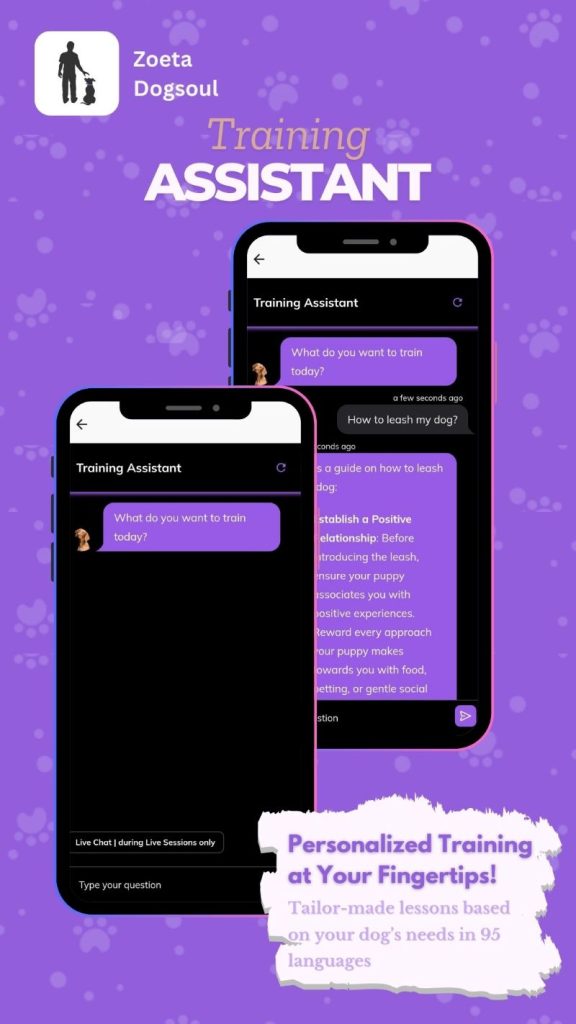
Human Psychology Component 🧡
Owner Perfectionism: When Your Anxiety Becomes Theirs
Your emotional state during training profoundly influences how your dog processes errors. If you’re a perfectionist who struggles with mistakes – your own or your dog’s – this anxiety transmits directly through the leash, creating a feedback loop that impairs learning for both of you.
The Synchronization Science: Research shows that dogs and their owners experience physiological synchronization during training. Your heart rate, cortisol levels, and even breathing patterns influence your dog’s stress response. When you tense up as your dog approaches a challenging behavior, they feel that tension before they even attempt the task. This pre-error anxiety primes them for failure, increasing mistake likelihood and extending recovery time.
Perfectionist Patterns to Recognize:
- Holding your breath when your dog attempts difficult behaviors
- Tensing muscles or gripping the leash tighter before potential errors
- Rapid-fire command repetition when your dog doesn’t immediately respond
- Feeling personally embarrassed by your dog’s public mistakes
- Comparing your dog’s progress to others obsessively
Breaking perfectionist patterns requires inner work alongside dog training. Consider practicing mindfulness, celebrating effort over outcome, and reframing mistakes as information rather than failures. Your dog needs you to model resilience and calm confidence when errors occur.
Cultural Shame Around Training “Failures”
Different cultures and communities carry varying levels of shame around dog training struggles, and these cultural pressures significantly impact how owners respond to their dogs’ errors.
Social Media Pressure: The curated perfection of social media creates unrealistic expectations. You see the polished final behaviors, not the thousands of mistakes that led there. This digital comparison trap leads many owners to:
- Hide their dogs’ struggles rather than seeking help
- Push too hard too fast to achieve Instagram-worthy results
- Feel isolated in their training challenges
- Abandon training entirely rather than be seen “failing”
Cultural Competence in Training: Some cultures view dog training success as reflecting personal discipline and control. Others see it as a measure of the human-animal bond. Understanding your cultural context helps identify unconscious pressures affecting your training. Ask yourself:
- What messages about animal training did I receive growing up?
- How does my community view dog behavior problems?
- What fears do I have about others judging my dog’s mistakes?
- Am I training for my dog’s wellbeing or social approval?
Liberation from cultural shame requires conscious choice. Your dog’s learning journey is unique, and comparing it to cultural expectations only adds unnecessary pressure to an already complex process.
Family Consistency: When Everyone Handles Errors Differently
In multi-person households, inconsistent responses to dog errors create confusion that significantly impairs learning. Your dog essentially must learn multiple “languages” for error feedback, trying to predict which system applies based on which family member is present.
The Consistency Challenge: Imagine learning to drive with instructors who had completely different rules – one says mistakes are fine, another gets angry, a third ignores errors entirely. This is your dog’s reality when family members handle errors differently. Common inconsistencies include:
- One person uses punishment while another ignores mistakes
- Different cues for the same behavior
- Varying criteria for what constitutes “correct”
- Emotional responses ranging from anger to laughter for the same error
Creating Family Alignment:
- Hold a family meeting specifically about error handling
- Create written protocols for common training scenarios
- Designate a primary trainer for new behaviors
- Practice together so everyone sees consistent approaches
- Use video to identify unconscious inconsistencies
Remember, perfect consistency is impossible, but striving for general alignment dramatically improves your dog’s ability to learn from mistakes.
Your Attachment Style and Training
Your human attachment style – developed through your own early relationships – unconsciously influences how you handle your dog’s errors. Understanding this connection provides powerful insights for improving training outcomes.
Secure Attachment Training Style: If you have secure attachment, you likely:
- Remain calm during your dog’s mistakes
- Provide consistent, predictable responses
- Balance support with appropriate challenges
- Trust your dog’s ability to learn and recover
Anxious Attachment Training Style: Those with anxious attachment might:
- Become overly distressed by their dog’s errors
- Provide excessive comfort that prevents learning
- Worry constantly about damaging the relationship
- Avoid challenging situations to prevent mistakes
Avoidant Attachment Training Style: Avoidant attachment can manifest as:
- Emotional withdrawal when dogs make mistakes
- Expecting too much independence too quickly
- Minimizing the importance of emotional support
- Feeling uncomfortable with the vulnerability of learning
Disorganized Attachment Training Style: This style might show:
- Unpredictable responses to the same errors
- Oscillating between harsh and permissive
- Confusion about appropriate boundaries
- Projecting past traumas onto training situations
Recognizing your attachment style isn’t about judgment – it’s about awareness. Once you understand your patterns, you can consciously choose responses that support your dog’s learning rather than unconsciously repeating familiar but unhelpful patterns.
Emergency and Crisis Protocols
Training Crisis Action Plan: When Everything Falls Apart
Sometimes, despite best intentions, training sessions spiral into crisis. Your dog completely shuts down, becomes aggressive, or enters a panic state. Having a clear action plan prevents these moments from causing lasting damage.
Immediate Crisis Response Protocol:
- STOP all training immediately – don’t try to end on a positive note
- CREATE SPACE – physically move away from the trigger or training area
- CALM THE NERVOUS SYSTEM – use whatever works for your dog (sniffing, gentle massage, quiet time)
- ASSESS for signs of injury, illness, or extreme stress
- RETREAT to a safe, familiar environment
- RECOVER – allow at least 24-48 hours before attempting training again
Crisis Recovery Strategies:
- Return to kindergarten-level behaviors your dog knows well
- Reduce training to 30-second sessions initially
- Use highest-value rewards to rebuild positive associations
- Consider environmental changes that might help
- Document what triggered the crisis for future prevention
Never push through a training crisis. The neurological impact of extreme stress during learning can create lasting negative associations that take months to overcome.
Recognizing Medical vs. Behavioral Issues
Sudden increases in training errors often signal underlying medical issues rather than behavioral problems. Learning to differentiate helps you respond appropriately and seek help when needed.
Medical Red Flags in Error Patterns:
- Sudden onset of mistakes in previously reliable behaviors
- Errors accompanied by physical symptoms (limping, scratching, lethargy)
- Inconsistent performance that correlates with time of day or activity level
- Regression in house training without obvious cause
- Difficulty with physical behaviors they previously performed easily
Common Medical Causes of Increased Errors:
- Pain: Arthritis, dental disease, injuries make certain positions uncomfortable
- Sensory decline: Vision or hearing loss affects cue perception
- Neurological issues: Seizures, cognitive dysfunction, vestibular disease
- Metabolic disorders: Thyroid imbalances, diabetes affect energy and focus
- Gastrointestinal discomfort: Makes concentration difficult
When in doubt, consult your veterinarian before assuming behavioral causes. A thorough medical evaluation should always precede intensive behavior modification.
Emergency Reset Protocols
After traumatic training experiences – whether a dog fight during class, a harsh correction from an uninformed helper, or an overwhelming fear event – your dog needs systematic rebuilding of training confidence.
The 3-3-3 Reset Protocol:
- 3 Days: Complete training break, focus only on bonding and calm activities
- 3 Weeks: Gradual reintroduction using only known, easy behaviors
- 3 Months: Slowly increasing difficulty while monitoring stress signals
Rebuilding After Trauma:
- Start in the safest possible environment (often your bedroom or another quiet space)
- Use novel rewards to create new positive associations
- Keep sessions ultra-short (10-30 seconds initially)
- Celebrate micro-successes enthusiastically
- Allow your dog to choose participation level
Trauma disrupts the error-processing system fundamentally. Patience during reset periods prevents secondary trauma from rushed rehabilitation attempts.
Finding Qualified Help: Red Flags vs. Green Flags
Knowing when and how to seek professional help can make the difference between resolution and escalation of training crises.
Red Flags in Trainers/Behaviorists:
- Guarantees quick fixes for complex problems
- Uses dominance theory or “alpha” language
- Recommends punishment-based tools as first solutions
- Dismisses your concerns about your dog’s stress
- Lacks credentials or continuing education
- Won’t let you observe before committing
- Becomes defensive when questioned about methods
Green Flags to Seek:
- Certified through reputable organizations (CCPDT, IAABC, KPA)
- Discusses the science behind their methods
- Prioritizes your dog’s emotional wellbeing
- Offers management strategies alongside training
- Collaborates with veterinarians
- Provides realistic timelines and expectations
- Continues their own education regularly
Don’t hesitate to interview multiple professionals. The right trainer or behaviorist will welcome your questions and share your commitment to humane, effective methods. Your dog’s wellbeing depends on choosing support that aligns with modern behavioral science and ethical practices. 🐾

Sport and Competition-Specific Sections
Agility Error Patterns: Speed, Precision, and Recovery
Agility presents unique error challenges where split-second decisions at high speeds can result in knocked bars, missed contacts, or wrong courses. Understanding these distinct error types helps handlers respond appropriately to maintain confidence while building accuracy.
Knocked Bars: The Depth Perception Challenge: When your dog consistently knocks bars, they’re experiencing errors in spatial judgment rather than carelessness. Contributing factors include:
- Visual processing speed not matching running speed
- Muscle fatigue affecting jump form
- Excitement overriding body awareness
- Early takeoff or landing patterns
Rather than repetitive drilling (which often worsens the problem), successful bar-knocking solutions focus on body awareness exercises, jump grids at reduced speed, and rewarding effort rather than just clear rounds. Your dog needs to understand that knocked bars are information about spacing, not failures requiring stress.
Missed Contacts: Precision Under Pressure: Contact errors reveal the challenge of maintaining precision during high arousal. Your dog must hit specific zones while running full speed – a cognitive load that increases error probability. Support strategies include:
- Separate contact training from sequence work initially
- Use props (hoops, mats) to create visual targets
- Reward position over speed during training
- Practice contacts at the end of sessions when slightly tired
The key is helping your dog understand that contacts are non-negotiable while maintaining their enthusiasm for the game.
Obedience Precision: When Millimeters Matter
Competitive obedience demands precision that can make minor errors feel catastrophic. Dogs must maintain exact positions while managing their own arousal and environmental distractions.
Heeling Micro-Errors: In competitive heeling, errors of mere inches affect scores. This precision requirement creates unique challenges:
- Dogs become hyper-aware of handler body language
- Stress from previous errors affects subsequent performance
- The pressure for perfection can create tense, mechanical movement
- Recovery from position errors must be invisible to judges
Successful precision training incorporates deliberate imperfection during practice. By occasionally rewarding “good enough” positions, you prevent the anxiety that comes from constant perfection pressure. Your dog learns that minor errors are adjustable rather than catastrophic.
Position Discriminations Under Pressure: The cognitive load of discriminating between sit, down, and stand under competition stress leads to increased errors. Dogs who never make mistakes at home might consistently confuse positions in the ring. This isn’t defiance – it’s the effect of stress on discrimination learning. Build resilience through:
- Proofing positions in gradually increasing distraction levels
- Rewarding thinking time rather than just speed
- Using different verbal and visual cues as backup systems
- Practicing recovery from wrong positions
Scent Work Mistakes: False Alerts and Missed Hides
Scent detection work presents unique error patterns where dogs must communicate invisible information while managing their own uncertainty and handler pressure.
False Alerts: The Confidence Dilemma: False alerts often develop when dogs learn that alerting behavior earns rewards regardless of odor presence. This creates a complex error pattern where the dog isn’t truly mistaken – they’re playing a different game than intended. Common causes include:
- Handler unconsciously cueing alerts through body language
- Rewarding proximity to hide rather than actual odor recognition
- Pressure to “find something” overwhelming scent discrimination
- Previous success creating location expectations
Addressing false alerts requires rebuilding the foundation: clear criteria for rewards, blind hides to eliminate handler influence, and celebrating honest “no odor” indications as much as finds.
Missed Hides: Processing Invisible Information: When dogs miss hides they should find, multiple factors might interfere:
- Scent pooling creating confusing odor pictures
- Environmental factors affecting scent movement
- Fatigue reducing processing capacity
- Anxiety about making mistakes ironically causing them
Support your scent dog by understanding that their errors provide information about invisible scent dynamics you can’t perceive. Trust their nose even when it seems wrong – they’re processing information beyond human comprehension.
Ring Stress and Error Multiplication
Competition environments create unique stressors that multiply error rates far beyond training levels. Understanding this phenomenon helps you prepare and support your dog effectively.
The Arousal-Accuracy Trade-off: Competition arousal affects dogs similarly to human athletes – increased adrenaline can enhance or impair performance depending on levels. Too little arousal creates sluggish, imprecise performance. Too much triggers error cascades. Finding your dog’s optimal arousal zone requires:
- Tracking performance at different excitement levels
- Identifying pre-competition routines that achieve ideal arousal
- Recognizing early signs of over-arousal
- Having protocols to adjust arousal up or down
Environmental Overwhelm: Competition venues assault your dog’s senses with:
- Hundreds of unfamiliar dogs and people
- Novel sounds, surfaces, and smells
- Judge pressure and formal procedures
- Spectator energy and applause
Each factor degrades error-processing capacity. Systematic desensitization to competition environments – through matches, fun runs, and venue visits – builds resilience before stakes increase. Remember, your dog doesn’t understand competition importance; they only know their error-processing system feels overwhelmed.
Detailed Nutrition and Error Processing Connection
Blood Sugar and Learning: The Glucose-Brain Partnership
Your dog’s blood sugar levels directly impact their ability to process errors and recover from mistakes. The brain consumes approximately 20% of the body’s glucose, and during intensive learning, this demand increases significantly.
The Timing Equation: When you feed your dog relative to training profoundly affects their error resilience:
- Training immediately after meals: Blood diverts to digestion, reducing brain available glucose. Dogs show slower processing, increased errors, and potential nausea during physical activities
- Training on empty stomach: Low blood sugar impairs executive function, reduces patience, and increases frustration with mistakes
- Optimal window: 2-3 hours post-meal provides stable glucose without digestive interference
Snacking Strategies for Sustained Learning: Using treats during training isn’t just about motivation – it’s about maintaining cognitive function. Small, frequent rewards help stabilize blood sugar during mentally demanding sessions. Choose treats that provide quick energy without causing spikes:
- Single-ingredient proteins for sustained energy
- Small portions to avoid digestive distraction
- Variety to maintain interest without overloading
- Hydrating options (frozen broth cubes) for longer sessions
Gut-Brain Axis: How Microbiome Influences Stress Response
The trillions of bacteria in your dog’s gut don’t just digest food – they produce neurotransmitters that directly influence how your dog’s brain processes stress from errors. This gut-brain axis means digestive health fundamentally affects learning capacity.
Microbiome Impacts on Error Processing:
- Beneficial bacteria produce GABA, reducing anxiety during mistakes
- Gut inflammation increases cortisol response to errors
- Dysbiosis (bacterial imbalance) correlates with reduced stress resilience
- Probiotic supplementation can improve error recovery times
Supporting Gut Health for Better Learning:
- Include prebiotic fibers (pumpkin, sweet potato) to feed beneficial bacteria
- Consider probiotic supplements during stressful training periods
- Avoid sudden diet changes that disrupt microbiome balance
- Monitor stool quality as an indicator of gut-brain health
When your dog experiences chronic training stress, their gut bacteria composition actually changes, creating a vicious cycle where poor error recovery leads to digestive issues, which further impair learning.
Hydration and Cognitive Function: Why Thirsty Dogs Make More Mistakes
Dehydration, even mild, significantly impairs your dog’s cognitive function and error-processing abilities. A water loss of just 2% body weight can reduce cognitive performance by up to 20%.
Dehydration’s Cognitive Impact:
- Reduced attention span makes focusing through errors difficult
- Impaired short-term memory affects learning from mistakes
- Increased irritability lowers frustration tolerance
- Slower reaction times lead to timing errors
- Decreased motivation to work through challenges
Hydration Strategies for Training:
- Offer water every 10-15 minutes during intensive sessions
- Use ice cubes or frozen treats in hot weather
- Monitor urine color (pale yellow indicates good hydration)
- Add water or broth to meals on training days
- Watch for excessive panting beyond normal exertion
Remember, by the time your dog shows obvious thirst, dehydration has already begun affecting cognitive function. Proactive hydration prevents error cascades caused by physiological stress.
Performance Nutrition: Feeding for Optimal Learning
Just as athletes require specific nutrition for peak performance, dogs engaged in intensive training benefit from targeted nutritional support that enhances error processing and recovery.
Brain-Boosting Nutrients:
- Omega-3 fatty acids (DHA/EPA): Improve neural plasticity and stress resilience. Found in fish oil, support error recovery and memory formation
- Antioxidants (Vitamins E, C): Protect brain cells from oxidative stress during intensive learning. Blueberries, spinach provide natural sources
- B-vitamins: Essential for neurotransmitter production. Deficiency increases anxiety and impairs learning
- L-theanine: Amino acid that promotes calm focus, improving error processing without sedation
Competition Day Nutrition Protocol:
- Light, easily digestible meal 3-4 hours before competition
- Small protein snack 1 hour prior for sustained energy
- Electrolyte supplementation if extensive physical activity expected
- Post-competition meal rich in anti-inflammatory ingredients
The goal isn’t creating a complex supplement regimen but rather ensuring your dog’s baseline nutrition supports their cognitive demands. A well-nourished brain processes errors more effectively, recovers faster from mistakes, and maintains learning capacity under stress. 🧡
Seasonal and Environmental Factors
Weather Impact: How Climate Affects Your Dog’s Mind
Temperature, barometric pressure, and humidity create surprising effects on your dog’s error-processing capacity. Understanding these weather-brain connections helps you adjust training expectations and support strategies seasonally.
Temperature Extremes and Cognitive Load: When your dog’s body works to maintain temperature homeostasis, fewer resources remain for cognitive processing:
- Heat stress (above 75°F/24°C for most breeds): Panting disrupts focus, dehydration impairs memory, and discomfort increases error rates. Dogs make 40% more mistakes when body temperature rises just 2 degrees
- Cold challenges (below 45°F/7°C for short-coated breeds): Shivering diverts energy, stiff muscles affect precision, and the drive to seek warmth overrides training focus
- Optimal learning zone: 50-65°F/10-18°C for most breeds, adjusted for coat type and conditioning
Barometric Pressure Sensitivity: Many dogs sense pressure changes hours before weather shifts. This biological barometer affects error processing through:
- Increased restlessness before storms, reducing attention span
- Joint discomfort in pressure-sensitive dogs affecting physical behaviors
- Anxiety spikes that impair learning capacity
- Heightened environmental vigilance that diverts focus from training
Track your dog’s performance against weather patterns. You might discover your dog learns best on stable, mild days and struggles before weather fronts.
Seasonal Affective Patterns: Winter vs. Summer Learning
Just as humans experience seasonal mood changes, dogs show distinct seasonal variations in learning capacity and error resilience. These patterns reflect evolutionary adaptations and modern lifestyle mismatches.
Winter Learning Patterns: Shorter days and reduced sunlight affect your dog’s:
- Serotonin production decreases, affecting mood and motivation
- Melatonin increases, creating lethargy that slows error recovery
- Indoor confinement reduces environmental enrichment
- Less exercise affects cognitive function and stress processing
Winter training adaptations might include UV lamp exposure, midday training sessions to maximize natural light, increased play to boost mood, and vitamin D supplementation (under veterinary guidance).
Summer Learning Advantages and Challenges: Longer days generally support better learning, but summer presents unique challenges:
- Extended daylight can create overarousal and difficulty settling
- Heat limits training windows to early morning or evening
- Increased environmental distractions (wildlife, people, activities)
- Allergies might affect focus and comfort
The key is recognizing these patterns aren’t character flaws but biological responses. Adjust your expectations and training schedule seasonally rather than fighting natural rhythms.
Indoor vs. Outdoor Error Patterns
The environment where training occurs fundamentally shapes how your dog processes and recovers from errors. Indoor and outdoor spaces engage different cognitive systems and present distinct challenges.
Indoor Training Dynamics:
- Controlled environment reduces variables, allowing focus on specific skills
- Familiar scents and sounds create comfort but might reduce attention
- Space limitations affect movement-based behaviors
- Artificial lighting might not provide full spectrum visual information
- Error recovery tends to be faster due to reduced distractions
Outdoor Training Challenges:
- Infinite distractions test impulse control and focus
- Natural surfaces provide proprioceptive feedback that enhances body awareness
- Weather variables add complexity to every behavior
- Scent information can overwhelm or enhance depending on training goals
- Social pressure from observers might affect both dog and handler performance
Smart trainers use both environments strategically. Master new behaviors indoors where error rates stay manageable, then systematically transfer to outdoor environments. This graduated approach builds confidence while maintaining reasonable challenge levels.
Travel and Novel Environments: Preparing for Increased Errors
When you take your dog to new places, their error rate typically increases dramatically – not because they’ve forgotten their training, but because their brain is processing massive amounts of novel information simultaneously.
The Cognitive Cost of Novelty: In new environments, your dog’s brain must:
- Map unfamiliar spatial layouts
- Assess potential threats and resources
- Process new scent information
- Navigate different surfaces and obstacles
- Maintain training focus despite overwhelming input
This cognitive load means even well-trained behaviors might fail temporarily. Your championship obedience dog might “forget” how to sit in a new location. This isn’t regression – it’s cognitive overload.
Travel Training Preparation Protocol:
- Two weeks before: Increase variety in training locations locally
- One week before: Practice in progressively novel environments
- Day before travel: Light training focusing on connection rather than precision
- Arrival day: No formal training, just exploration and acclimation
- Subsequent days: Gradually reintroduce familiar behaviors at reduced criteria
Remember to pack familiar items (bed, toys, bowls) that provide olfactory comfort and reduce overall stress. Your dog’s error rate in new places directly correlates with their overall comfort level. Prioritize emotional security over training precision during travel.
Emerging Technologies and Methodologies
New technologies are revolutionizing our understanding of how dogs process errors, providing insights previously impossible to obtain.
Brain Imaging Advances: Functional MRI studies with awake, trained dogs reveal real-time neural activity during error processing. These studies show activation patterns remarkably similar to humans, suggesting shared evolutionary mechanisms for learning from mistakes. Future research will likely map specific error types to distinct neural signatures, allowing more targeted training interventions.
Wearable Sensors: Heart rate variability monitors, cortisol-detecting collars, and movement sensors provide continuous data about stress and recovery during training. This technology enables trainers to identify optimal challenge levels for individual dogs and recognize stress before behavioral signs appear.
Implications for Service and Working Dog Programs
Understanding error processing has profound implications for selecting and training service and working dogs, where mistakes can have serious consequences.
Early Prediction of Success: Puppies who show balanced error recovery – neither shutting down nor becoming overly frustrated – are more likely to complete service dog programs successfully. This knowledge influences breeding decisions and early puppy raising protocols.
Customized Training Protocols: Rather than one-size-fits-all approaches, programs increasingly tailor error exposure to individual dogs’ processing styles. A future guide dog might receive different error correction strategies than a medical alert dog, based on their specific cognitive profiles and job requirements.
Applications in Veterinary Behavioral Medicine
Veterinary behaviorists increasingly recognize error processing dysfunction as a component of various behavioral disorders, opening new treatment avenues.
Anxiety and Error Sensitivity: Dogs with anxiety disorders often show hypersensitivity to errors, catastrophizing small mistakes. Treatment protocols now incorporate systematic desensitization to errors, gradually building tolerance for mistakes in safe contexts.
Cognitive Dysfunction and Error Processing: Senior dogs with cognitive dysfunction show distinct changes in error processing patterns. Early detection of these changes might enable earlier intervention, potentially slowing cognitive decline.
Creating Your Personal Error-Positive Training Plan
Assessment: Understanding Your Dog’s Error Style
Before developing your training approach, assess how your individual dog currently processes errors. This personalized understanding enables targeted support.
Observation Checklist:
- How quickly does your dog re-engage after a mistake?
- What physical signs of stress do you observe?
- Does your dog seek social support or withdraw?
- Are there specific error types that cause more difficulty?
- How does fatigue influence error recovery?
Document these patterns over several training sessions, noting environmental factors that influence responses. This baseline helps you recognize progress and identify areas needing extra support.
Implementation: Your 4-Week Error Resilience Program
Week 1: Foundation Building
- Focus on high-success-rate activities (90% accuracy)
- Introduce one “challenge moment” per session
- Celebrate all attempts, regardless of outcome
- End every session with guaranteed success
Week 2: Controlled Challenges
- Reduce success rate to 80%
- Introduce puzzle toys with multiple solutions
- Practice “mistake recovery” cue in low-stakes contexts
- Incorporate play immediately after error sequences
Week 3: Building Complexity
- Add mild distractions during familiar tasks
- Chain behaviors where errors require starting over
- Reward persistence and problem-solving attempts
- Introduce choice-based training scenarios
Week 4: Real-World Application
- Practice in novel environments
- Allow natural consequences for some errors
- Celebrate creative problem-solving
- Document improvement in error recovery time
Troubleshooting Common Challenges
Even with the best intentions, you might encounter obstacles in building your dog’s error resilience. Here’s how to address common issues:
“My dog shuts down after just one mistake” Start with errorless learning, gradually introducing tiny challenges. Consider whether past training created negative associations that need addressing. Work with a certified behaviorist if shutdown persists.
“My dog gets increasingly frantic with each error” This escalation suggests overwhelming arousal. Incorporate calming protocols (mat work, breathing exercises) between attempts. Reduce session length and increase break frequency.
“My dog keeps repeating the same mistake” Your dog might not understand what’s being asked. Break the behavior into smaller components, ensure your cues are consistent, and consider whether physical limitations affect performance.
Conclusion: Embracing the Learning Journey
As we’ve explored throughout this comprehensive guide, your dog’s mistakes aren’t obstacles to learning – they’re the very foundation upon which robust, flexible, and confident behaviors are built. Every error your furry friend makes provides valuable information to their remarkable brain, shaping neural pathways, building emotional resilience, and deepening their understanding of the world around them.
Understanding how your dog processes errors transforms you from simply a trainer into a learning partner. You’re no longer just teaching commands; you’re facilitating cognitive development, supporting emotional growth, and building a relationship based on trust and mutual understanding. When you respond to your dog’s mistakes with patience, clarity, and encouragement, you’re not just improving their performance – you’re enhancing their overall wellbeing and quality of life.
The science of error correction in canine cognition continues to evolve, revealing ever-deeper insights into our dogs’ remarkable minds. From the neurological orchestra that processes each mistake to the social dimensions that shape recovery, we’re learning that dogs possess sophisticated cognitive and emotional capabilities that deserve our respect and thoughtful support.
As you move forward with your training journey, remember that perfection isn’t the goal – progress is. Every mistake is an opportunity, every error a teacher, and every recovery a victory. Your dog’s willingness to try, fail, and try again represents one of the most beautiful aspects of the human-canine bond. By embracing errors as part of the learning process, you’re not just training behaviors – you’re nurturing a confident, resilient, and joyful learning partner who will continue growing alongside you throughout their life.
So the next time your dog makes a mistake during training, take a moment to appreciate the complex cognitive and emotional processes unfolding in that furry head. Offer support, provide guidance, and celebrate their willingness to keep trying. Together, you’re not just overcoming errors – you’re building a partnership that transcends simple obedience, reaching into the profound connection that makes the human-dog relationship one of nature’s most remarkable achievements. 🐾🧡
Remember: every expert was once a beginner, every master was once a disaster, and every perfectly trained dog was once a puppy making countless mistakes. It’s not about avoiding errors – it’s about learning to dance with them, growing stronger with each step, and building a bond that celebrates the journey as much as the destination.

